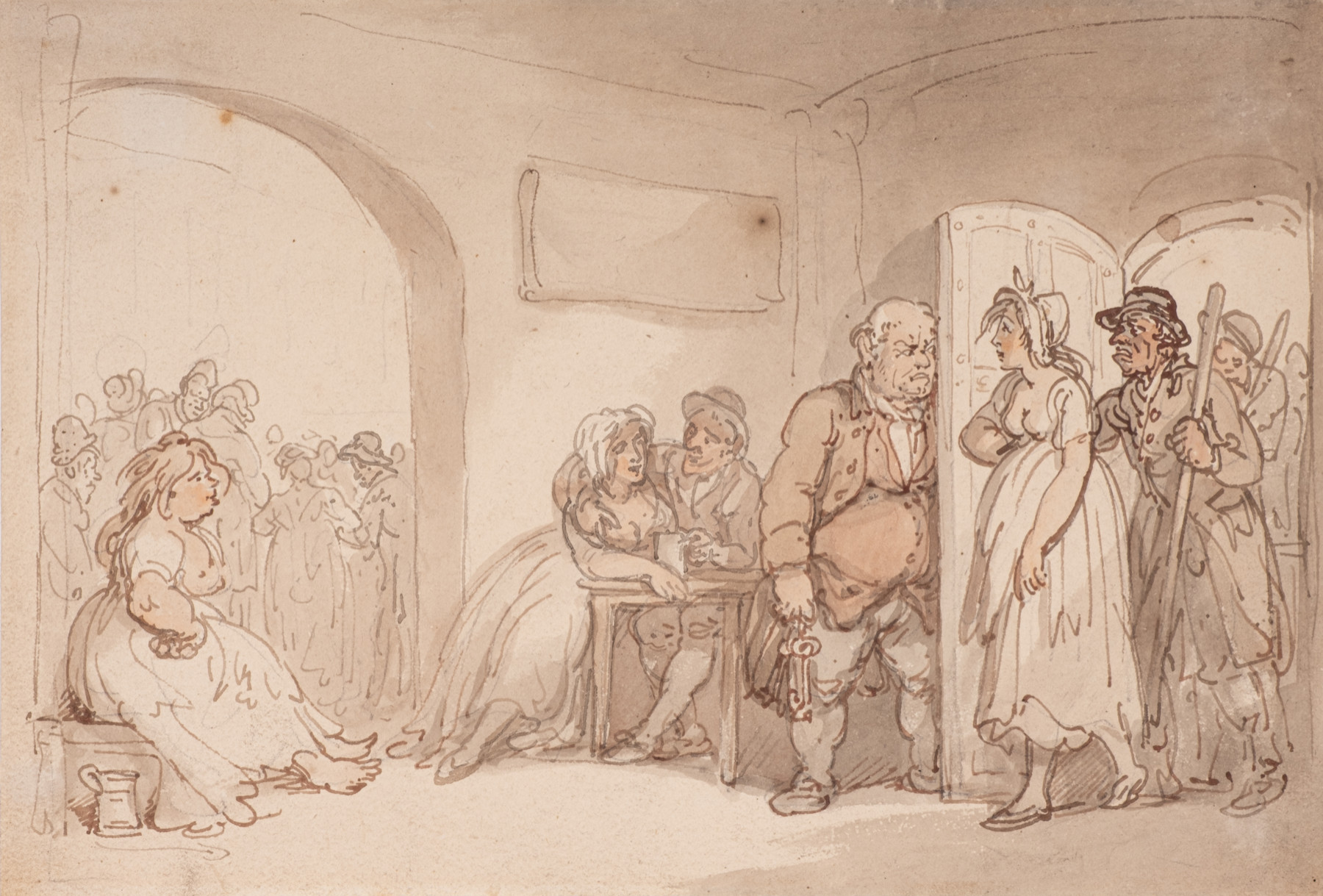
(click image to enlarge)
The notorious Marshalsea Prison, situated in Southwark, London, had housed a variety of prisoners since 1373. By the eighteenth century, it had become known largely as debtors prison, with many prisoners incarcerated for debts of as little as a few pounds. Prisoners were allowed certain freedoms, could conduct business, receive visitors and lovers, and many had their wives and children live with them in the prison. Marshalsea had a kitchen, a public room, and even a tap room, where debtors could drink as much beer as they liked for fivepence a pot in 1815. Prostitutes arrested by the watch were held and bought before the Constable of the night. Thomas Rowlandson produced several other images relating to the rounding up of prostitutes.
Marshalsea Prison was demolished and rebuilt in 1811 after prison reformers had drawn attention to the original site’s decaying and ruinous state. Thomas Rowlandson likely produced the present drawing around 1820, by which time the newly rebuilt Marshalsea would have once again become considerably overcrowded. Marshalsea was closed by an Act of Parliament in 1842, with the inmates being moved to Bethlem or the King’s Bench Prison.
Marshalsea is known as having featured in a number of Charles Dickens novels, including The Pickwick Papers, David Copperfield and particularly in Little Dorritt, whose main character, Amy Dorritt, was born and raised at Marshalsea. Dickens had first-hand experience of Marshalsea, having seen his father, John, sent there in 1824 for a debt of £40 10 shillings to a baker.
The present drawing is likely to be a preliminary sketch for the drawing that is in the collections of the Boston Public Library (Arthur Heintzelman, Watercolour Drawings of Thomas Rowlandson from the Boston Public Library, New York, NY: Watson-Guptill, 1947, page 107).